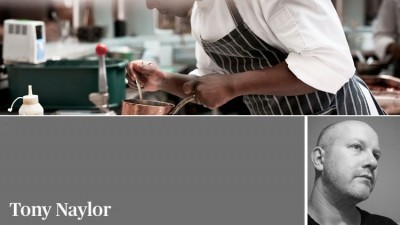Kid-friendly: why restaurants should get behind goat meat

Each year, in the dairy industry – in a practice some refer to as ‘the dirty secret’ – an estimated 92,000 male calves are killed soon after birth. Bulls are useless to dairy farmers and, due to limited demand and the unsuitability of certain dairy breeds for raising as veal or beef, slaughter can be more cost-effective than selling those animals on.
Thanks to initiatives by farmers and retailers that figure is far lower than it once was. According to data from industry liaison body the Cattle Health & Welfare Group, 81% of bull calves now go into the UK food chain. That’s 392,473 in 2015 as opposed to 245,586 in 2006.
But, still, 92,000 dead calves is an enormous waste of resources and, in the dairy industry, such waste is not confined to cows. Goats’ milk production creates the same issue. Milk producers cannot use (male) kids and a reported 40,000 billy goats are culled annually. Goatober is an international push by a coalition of dairies, farmers and NGOs to tackle this shameful situation by, not least, turning chefs on to the potential of goat meat.
Throughout October, in New York, London, Ibiza and beyond, across seminars, restaurant events and dedicated menus, kid and goat meat (already eaten by 75% of the world’s population) will be heralded in an attempt to popularise what in Britain – outside of African, Asian and Caribbean communities – remains a niche meat. Occasionally, you spot goat in London restaurants (Gymkhana, Smoking Goat), but this is an attempt to break it big-time and, as James Whetlor, owner of Devon’s Cabrito Goat Meat and a former chef, puts it: “End the systematic culling of billy goats.”
Those raising billy goats for meat, according to the Sustainable Restaurant Association’s Peter Hemingway are “handily converting a waste stream into a relatively high-value product”. Diversifying into this “tasty” meat, he says, is an ethical and ecological no-brainer.
For instance: “Not all of them are, but on outdoor [farming] systems, ruminants are good for the soil.”
Mary-Ellen McTague, chef-owner at Manchester’s The Creameries, is a similar convert. Her restaurant makes a point of not serving what is typically considered to be mainstream meat. Instead, she uses versatile goat meat and game only.
“I’ve wanted to do it for a while,” says McTague. “Using goat feels less wasteful, suits my cooking style and, in restaurants, I think people appreciate having meat they don’t generally cook at home.”
Located in right-on, bohemian Chorlton, The Creameries perhaps has more licence than most to take this stance, but diners have embraced its move away from intensively farmed meat. “Only one person has been angry that I don’t have farmed meat on,” adds McTague. “Otherwise, no one’s mentioned it.”
The Creameries makes air-dried hams from goat legs, shoulders are brined and barbecued, and the fat is rendered for bread and dripping. The breast and loin are turned into bacon, which is often used as an intense meaty garnish on dishes. “Goat goes a long way,” says McTague.
It’s not just goat that chefs can use. Hemingway flags up wild boar and muntjac deer as two animals whose numbers are “running riot”, which it makes sense to eat more of.
He does, however, sound one note of caution. The aim here is to take up the slack, to use the goats currently going to waste. Were goat meat to take-off in a way that spawned a dedicated goat meat industry then the benefit is lost and a new high-carbon method of protein production is created.
That is a distant dilemma. But, right now, chefs can make an immediate positive change by embracing goat meat. Don’t just do it for your customers, do it for the kids.
This article first appeared in the October issue of Restaurant magazine, the leading title for the UK's restaurant industry. For more features, comment, interviews and in-depth analysis of the restaurant sector subscribe to Restaurant magazine here. Follow Tony on Twitter @naylor_tony




















